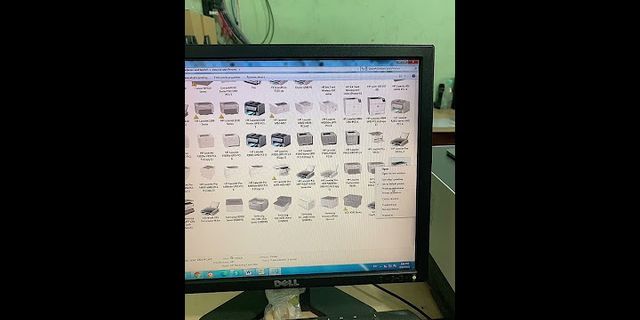In this section, you learn about WAN access technologies available to small- to medium-sized business networks. Show Purpose of WANs (1.1.1)In this topic, you learn the purpose of the WAN. Why a WAN? (1.1.1.1)A WAN operates beyond the geographic scope of a LAN. As shown Figure 1-1, WANs are used to interconnect the enterprise LAN to remote LANs in branch sites and telecommuter sites.
 Figure 1-1 WANs Interconnect Users and LANs A WAN is owned by a service provider. A user must pay a fee to use the provider’s network services to connect remote sites. WAN service providers include carriers, such as a telephone network, cable company, or satellite service. Service providers provide links to interconnect remote sites for the purpose of transporting data, voice, and video. In contrast, LANs are typically owned by an organization. They are used to connect local computers, peripherals, and other devices within a single building or other small geographic area. Are WANs Necessary? (1.1.1.2)Without WANs, LANs would be a series of isolated networks. LANs provide both speed and cost-efficiency for transmitting data over relatively small geographic areas. However, as organizations expand, businesses require communication among geographically separated sites. The following are some examples:
Home computer users also need to send and receive data across increasingly larger distances. Here are some examples:
It is not feasible to connect computers across a country, or around the world, with physical cables. Therefore, different technologies have evolved to support this communication requirement. Increasingly, the Internet is being used as an inexpensive alternative to enterprise WANs. New technologies are available to businesses to provide security and privacy for their Internet communications and transactions. WANs used by themselves, or in concert with the Internet, allow organizations and individuals to meet their wide-area communication needs. WAN Topologies (1.1.1.3)Interconnecting multiple sites across WANs can involve a variety of service provider technologies and WAN topologies. Common WAN topologies are
Point-to-PointA point-to-point topology, as shown in Figure 1-2, employs a point-to-point circuit between two endpoints. Typically involving dedicated leased-line connections like a T1 or an E1 line, a point-to-point connection provides a Layer 2 transport service through the service provider network. Packets sent from one site are delivered to the other site and vice versa. A point-to-point connection is transparent to the customer network, as if there was a direct physical link between two endpoints.
 Figure 1-2 Point-to-Point Topology Hub-and-SpokeIf a private network connection between multiple sites is required, a point-to-point topology with multiple point-to-point circuits is one option. Each point-to-point circuit requires its own dedicated hardware interface that will require multiple routers with multiple WAN interface cards. This interface can be expensive. A less expensive option is a point-to-multipoint topology, also known as a hub-and-spoke topology. With a hub-and-spoke topology, all spoke circuits can share a single interface to the hub. For example, spoke sites can be interconnected through the hub site using virtual circuits and routed subinterfaces at the hub. A hub-and-spoke topology is also an example of a single-homed topology. Figure 1-3 displays a sample hub-and-spoke topology consisting of four routers with one router as a hub connected to the other three spoke routers across a WAN cloud.
 Figure 1-3 Hub-and-Spoke Topology Full MeshOne of the disadvantages of hub-and-spoke topologies is that all communication has to go through the hub. With a full mesh topology using virtual circuits, any site can communicate directly with any other site. The disadvantage here is the large number of virtual circuits that need to be configured and maintained. Figure 1-4 displays a sample full mesh topology consisting of four routers connected to each other across a WAN cloud. Dual-homed TopologyA dual-homed topology provides redundancy. As shown in Figure 1-5, the spoke routers are dual-homed and redundantly attached to two hub routers across a WAN cloud. The disadvantage to dual-homed topologies is that they are more expensive to implement than a single-homed topology. The reason is that they require additional networking hardware, like additional routers and switches. Dual-homed topologies are also more difficult to implement because they require additional, and more complex, configurations. However, the advantage of dual-homed topologies is that they offer enhanced network redundancy, load balancing, distributed computing or processing, and the ability to implement backup service provider connections.
 Figure 1-4 Full Mesh Topology
 Figure 1-5 Dual-Homed Topology Evolving Networks (1.1.1.4)Every business is unique, so how an organization grows depends on many factors. These factors include the types of products or services the business sells, the management philosophy of the owners, and the economic climate of the country in which the business operates. In slow economic times, many businesses focus on increasing their profitability by improving the efficiency of their existing operations, increasing employee productivity, and lowering operating costs. Establishing and managing networks can represent significant installation and operating expenses. To justify such a large expense, companies expect their networks to perform optimally and to be able to deliver an ever-increasing array of services and applications to support productivity and profitability. The example used in this chapter and shown in Figure 1-6 is of a fictitious company called SPAN Engineering. This topic will illustrate how SPAN’s network requirements change as the company grows from a small, local business into a global enterprise.
 Figure 1-6 SPAN Engineering Small Office (1.1.1.5)SPAN Engineering, an environmental consulting firm, has developed a special process for converting household waste into electricity and is developing a small pilot project for a municipal government in its local area. The company, which has been in business for four years, is a small office consisting of 15 employees: six engineers, four computer-aided drawing (CAD) designers, a receptionist, two senior partners, and two office assistants. SPAN Engineering’s management is working to win full-scale contracts after the pilot project successfully demonstrates the feasibility of the company’s process. Until then, the company must manage its costs carefully. As shown in Figure 1-7, SPAN Engineering uses a single LAN to share information between computers and to share peripherals, such as a printer, a large-scale plotter (to print engineering drawings), and fax equipment.
 Figure 1-7 Connecting a Small Office The company has recently upgraded its LAN to provide inexpensive voice over IP (VoIP) service to save on the costs of separate phone lines for employees. Internet connectivity is provided using a common broadband service called digital subscriber line (DSL), which is supplied by the local telephone service provider. Because SPAN has so few employees, bandwidth is not a significant problem. The company cannot afford in-house IT support staff, so it uses support services purchased from the DSL provider. The company also uses a hosting service rather than purchasing and operating its own FTP and email servers. Campus Network (1.1.1.6)Five years later, SPAN Engineering has grown rapidly. The company was contracted to design and implement a full-size waste conversion facility soon after the successful implementation of its first pilot plant. Since then, SPAN has won other projects in neighboring municipalities and in other parts of the country. To handle the additional workload, the business has hired more staff and leased more office space. It is now a small- to medium-sized business with several hundred employees. Many projects are being developed at the same time, and each requires a project manager and support staff. The company has organized itself into functional departments, with each department having its own organizational team. To meet its growing needs, the company has moved into several floors of a larger office building. As the business has expanded, the network has also grown. Instead of a single small LAN, the network now consists of several subnetworks, each devoted to a different department. For example, all the engineering staff is on one LAN, while the marketing staff is on another LAN. These multiple LANs are joined to create a companywide network, or campus, which spans several floors of the building. Figure 1-8 shows an example of SPAN’s campus network.
 Figure 1-8 Connecting a Campus Network The business now has in-house IT staff to support and maintain the network. The network includes dedicated servers for email, data transfer, and file storage, and web-based productivity tools and applications. In addition, a company intranet provides in-house documents and information to employees. An extranet provides project information to designated customers. Branch Networks (1.1.1.7)Another six years later, SPAN Engineering has been so successful with its patented process that demand for its services has skyrocketed. New projects are underway in multiple cities. To manage those projects, the company has opened small branch offices closer to the project sites. This situation presents new challenges to the IT team. To manage the delivery of information and services throughout the company, SPAN Engineering now has a data center, which houses the various databases and servers of the company. To ensure that all parts of the business are able to access the same services and applications regardless of where the offices are located, the company must now implement a WAN. For its branch offices that are in nearby cities, the company decides to use private dedicated lines through a local service provider, as shown in Figure 1-9. However, for those offices that are located in other countries, the Internet is an attractive WAN connection option. Although connecting offices through the Internet is economical, this approach introduces security and privacy issues that the IT team must address.
 Figure 1-9 Connecting Branch Networks Distributed Network (1.1.1.8)SPAN Engineering has now been in business for 20 years and has grown to thousands of employees distributed in offices worldwide, as shown in Figure 1-10. The cost of the enterprise network and its related services is a significant expense. The company is looking to provide its employees with the best network services at the lowest cost. Optimized network services would allow each employee to work at a high rate of efficiency.
 Figure 1-10 SPAN Engineering To increase profitability, SPAN Engineering must reduce its operating expenses. It has relocated some of its office facilities to less expensive areas. The company is also encouraging teleworking and virtual teams. Web-based applications, including web conferencing, e-learning, and online collaboration tools, are being used to increase productivity and reduce costs. Site-to-site and remote-access virtual private networks (VPNs) enable the company to use the Internet to connect easily and securely with employees and facilities around the world. To meet these requirements, the network must provide the necessary converged services and secure Internet WAN connectivity to remote offices and individuals, as shown in Figure 1-11. As seen in this example, network requirements of a company can change dramatically as the company grows over time. Distributing employees saves costs in many ways, but it puts increased demands on the network. A network not only must meet the day-to-day operational needs of the business but also must be able to adapt and grow as the company changes. Network designers and administrators meet these challenges by carefully choosing network technologies, protocols, and service providers. They must also optimize their networks by using many of the network design techniques and architectures described in this course.
 Figure 1-11 Connecting a Global Enterprise Network WAN Operations (1.1.2)In this topic, you learn how WANs operate. WANs in the OSI Model (1.1.2.1)WAN operations focus primarily on the physical layer (OSI Layer 1) and the data link layer (OSI Layer 2), as illustrated in Figure 1-12. WAN access standards typically describe both physical layer delivery methods and data link layer requirements. The data link layer requirements include physical addressing, flow control, and encapsulation. WAN access standards are defined and managed by a number of recognized authorities:
Layer 1 protocols describe how to provide electrical, mechanical, operational, and functional connections to the services of a communications service provider.
 Figure 1-12 WANs Operate in Layers 1 and 2 Layer 2 protocols define how data is encapsulated for transmission toward a remote location and the mechanisms for transferring the resulting frames. A variety of different technologies are used, such as the Point-to-Point Protocol (PPP), Frame Relay, and Asynchronous Transfer Mode (ATM). Some of these protocols use the same basic framing or a subset of the High-Level Data Link Control (HDLC) mechanism. Most WAN links are point-to-point. For this reason, the address field in the Layer 2 frame is usually not used. Common WAN Terminology (1.1.2.2)One primary difference between a WAN and a LAN is that a company or organization must subscribe to an outside WAN service provider to use WAN carrier network services. A WAN uses data links provided by carrier services to access the Internet and connect different locations of an organization to each other. These data links also connect to locations of other organizations, to external services, and to remote users. The physical layer of a WAN describes the physical connections between the company network and the service provider network. Figure 1-13 illustrates the terminology commonly used to describe WAN connections:
 Figure 1-13 WAN Terminology
WAN Devices (1.1.2.3)Many types of devices are specific to WAN environments, as shown in Figure 1-14, and are described in the list that follows.
 Figure 1-14 Common WAN Devices
WAN technologies are either circuit-switched or packet-switched. The type of device used depends on the WAN technology implemented. Circuit Switching (1.1.2.4)A circuit-switched network is one that establishes a dedicated circuit (or channel) between nodes and terminals before the users may communicate. Specifically, circuit switching dynamically establishes a dedicated virtual connection for voice or data between a sender and a receiver. Before communication can start, it is necessary to establish the connection through the network of the service provider, as shown in Figure 1-15. As an example, when a subscriber makes a telephone call, the dialed number is used to set switches in the exchanges along the route of the call so that there is a continuous circuit from the caller to the called party. Because of the switching operation used to establish the circuit, the telephone system is called a circuit-switched network. If the telephones are replaced with modems, the switched circuit is able to carry computer data.
 Figure 1-15 Circuit-Switched Network If the circuit carries computer data, the usage of this fixed capacity may not be efficient. For example, if the circuit is used to access the Internet, a burst of activity occurs on the circuit while a web page is transferred. This burst could be followed by no activity while the user reads the page and then another burst of activity while the next page is transferred. This variation in usage between none and maximum is typical of computer network traffic. Because the subscriber has sole use of the fixed capacity allocation, switched circuits are generally an inefficient way of moving data. The two most common types of circuit-switched WAN technologies are the public switched telephone network (PSTN) and the Integrated Services Digital Network (ISDN). Packet Switching (1.1.2.5)In contrast to circuit switching, a packet-switched network (PSN) splits traffic data into packets that are routed over a shared network. Packet-switching networks do not require a circuit to be established, and they allow many pairs of nodes to communicate over the same channel. The switches in a PSN determine the links that packets must be sent over based on the addressing information in each packet. The following are two approaches to this link determination:
Because the internal links between the switches are shared between many users, the cost of packet switching is lower than that of circuit switching. However, latency (delays) and jitter (variability of delay) are greater in packet-switched networks than in circuit-switched networks. The reason is that the links are shared, and packets must be entirely received at one switch before moving to the next. Despite the latency and jitter inherent in shared networks, modern technology allows satisfactory transport of voice and video communications on these networks. In Figure 1-16, SRV1 is sending data to SRV2. As packets traverse the provider network, they arrive at the first provider switch. Packets are added to the queue and forwarded after other packets in the queue have been forwarded. Eventually, the packets reach SRV2.
 Figure 1-16 Packet-Switched Network Page 2
In this section, you learn how to select WAN access technologies to satisfy business requirements. WAN Services (1.2.1)In this topic, you learn about different WAN services available. WAN Link Connection Options (1.2.1.1)ISPs can use are several WAN access connection options to connect the local loop to the enterprise edge. These WAN access options differ in technology, speed, and cost. Each has distinct advantages and disadvantages. Familiarity with these technologies is an important part of network design. As shown in Figure 1-17 and described in the list that follows, an enterprise can get WAN access in two ways.
 Figure 1-17 WAN Access Options
The topology in Figure 1-18 illustrates some of these WAN access technologies.
 Figure 1-18 WAN Access Technologies Service Provider Network Infrastructure (1.2.1.2)When a WAN service provider receives data from a client at a site, it must forward the data to the remote site for final delivery to the recipient. In some cases, the remote site may be connected to the same service provider as the originating site. In other cases, the remote site may be connected to a different ISP, and the originating ISP must pass the data to the connecting ISP. Long-range communications are usually those connections between ISPs, or between branch offices in very large companies. Service provider networks are complex. They consist mostly of high-bandwidth fiber-optic media, using either the Synchronous Optical Networking (SONET) or Synchronous Digital Hierarchy (SDH) standard. These standards define how to transfer multiple data, voice, and video traffic over optical fiber using lasers or light-emitting diodes (LEDs) over great distances. A newer fiber-optic media development for long-range communications is called dense wavelength division multiplexing (DWDM). DWDM multiplies the amount of bandwidth that a single strand of fiber can support, as illustrated in Figure 1-19.
 Figure 1-19 DWDM DWDM enables long-range communication in several ways:
DWDM circuits are used in all modern submarine communications cable systems and other long-haul circuits, as illustrated in Figure 1-20.
 Figure 1-20 Service Provider Networks Use DWDM Private WAN Infrastructures (1.2.2)In this topic, you compare private WAN technologies. Leased Lines (1.2.2.1)When permanent dedicated connections are required, a point-to-point link is used to provide a pre-established WAN communications path from the customer premises to the provider network. Point-to-point lines are usually leased from a service provider and are called leased lines. Leased lines have existed since the early 1950s; for this reason, they are referred to by different names such as leased circuits, serial link, serial line, point-to-point link, and T1/E1 or T3/E3 lines. The term leased line refers to the fact that the organization pays a monthly lease fee to a service provider to use the line. Leased lines are available in different capacities and are generally priced based on the bandwidth required and the distance between the two connected points. In North America, service providers use the T-carrier system to define the digital transmission capability of a serial copper media link, while Europe uses the E-carrier system, as shown in Figure 1-21. For instance, a T1 link supports 1.544 Mb/s, an E1 supports 2.048 Mb/s, a T3 supports 43.7 Mb/s, and an E3 connection supports 34.368 Mb/s. Optical carrier (OC) transmission rates are used to define the digital transmitting capacity of a fiber-optic network.
 Figure 1-21 Sample Leased-Line Topology Table 1-1 describes the advantages and disadvantages of using leased lines. Table 1-1 Advantages/Disadvantages of Leased Lines
The Layer 2 protocol is usually HDLC or PPP. Dialup (1.2.2.2)Dialup WAN access may be required when no other WAN technology is available. For example, a remote location could use modems and analog dialed telephone lines to provide low capacity and dedicated switched connections, as shown in Figure 1-22. Dialup access is suitable when intermittent, low-volume data transfers are needed.
 Figure 1-22 Sample Dialup Topology Traditional telephony uses a copper cable, called the local loop, to connect the telephone handset in the subscriber premises to the CO. The signal on the local loop during a call is a continuously varying electronic signal that is a translation of the subscriber voice into an analog signal. Traditional local loops can transport binary computer data through the voice telephone network using a dialup modem. The modem modulates the binary data into an analog signal at the source and demodulates the analog signal to binary data at the destination. The physical characteristics of the local loop and its connection to the PSTN limit the rate of the signal to less than 56 kb/s. For small businesses, these relatively low-speed dialup connections are adequate for the exchange of sales figures, prices, routine reports, and email. Using automatic dialup at night or on weekends for large file transfers and data backup can take advantage of lower off-peak rates. These rates, often referred to as tariffs or toll charges, are based on the distance between the endpoints, time of day, and the duration of the call. The advantages of modem and analog lines are simplicity, availability, and low implementation cost. The disadvantages are the low data rates and a relatively long connection time. The dedicated circuit has little delay or jitter for point-to-point traffic, but voice or video traffic does not operate adequately at these low bit rates. ISDN (1.2.2.3)Integrated Services Digital Network (ISDN) is a circuit-switching technology that enables the local loop of a PSTN to carry digital signals, resulting in higher capacity switched connections. ISDN changes the internal connections of the PSTN from carrying analog signals to time-division multiplexed (TDM) digital signals. TDM allows two or more signals, or bit streams, to be transferred as subchannels in one communication channel. The signals appear to transfer simultaneously; but physically, the signals are taking turns on the channel. Figure 1-23 displays a sample ISDN topology. The ISDN connection may require a terminal adapter (TA), which is a device used to connect ISDN Basic Rate Interface (BRI) connections to a router.
 Figure 1-23 Sample ISDN Topology The two types of ISDN interfaces are as follows:
 Figure 1-24 ISDN BRI
 Figure 1-25 ISDN PRI BRI has a call setup time that is less than a second, and the 64 kb/s B channel provides greater capacity than an analog modem link. In comparison, the call setup time of a dialup modem is approximately 30 or more seconds with a theoretical maximum of 56 kb/s. With ISDN, if greater capacity is required, a second B channel can be activated to provide a total of 128 kb/s. This permits several simultaneous voice conversations, a voice conversation and data transfer, or a video conference using one channel for voice and the other for video. Another common application of ISDN is to provide additional capacity as needed on a leased-line connection. The leased line is sized to carry average traffic loads while ISDN is added during peak demand periods. ISDN is also used as a backup if the leased line fails. ISDN tariffs are based on a per-B channel basis and are similar to those of analog voice connections. With PRI ISDN, multiple B channels can be connected between two endpoints. This allows for videoconferencing and high-bandwidth data connections with no latency or jitter. However, multiple connections can be very expensive over long distances. Frame Relay (1.2.2.4)Frame Relay is a simple Layer 2 nonbroadcast multi-access (NBMA) WAN technology used to interconnect enterprise LANs. A single router interface can be used to connect to multiple sites using permanent virtual circuits (PVCs). PVCs are used to carry both voice and data traffic between a source and destination, and support data rates up to 4 Mb/s, with some providers offering even higher rates. An edge router requires only a single interface, even when multiple VCs are used. The leased line to the Frame Relay network edge allows cost-effective connections between widely scattered LANs. Frame Relay creates PVCs, which are uniquely identified by a data-link connection identifier (DLCI). The PVCs and DLCIs ensure bidirectional communication from one DTE device to another. For instance, in Figure 1-26, R1 will use DLCI 102 to reach R2 while R2 will use DLCI 201 to reach R1.
 Figure 1-26 Sample Frame Relay Topology ATM (1.2.2.5)Asynchronous Transfer Mode (ATM) technology is capable of transferring voice, video, and data through private and public networks. It is built on a cell-based architecture rather than on a frame-based architecture. ATM cells are always a fixed length of 53 bytes. The ATM cell contains a 5-byte ATM header followed by 48 bytes of ATM payload. Small, fixed-length cells are well suited for carrying voice and video traffic because this traffic is intolerant of delay. Video and voice traffic do not have to wait for larger data packets to be transmitted, as shown in Figure 1-27. The 53-byte ATM cell is less efficient than the bigger frames and packets of Frame Relay. Furthermore, the ATM cell has at least 5 bytes of overhead for each 48-byte payload. When the cell is carrying segmented network layer packets, the overhead is higher because the ATM switch must be able to reassemble the packets at the destination. A typical ATM line needs almost 20 percent greater bandwidth than Frame Relay to carry the same volume of network layer data.
 Figure 1-27 Sample ATM Topology ATM was designed to be extremely scalable and to support link speeds of T1/E1 to OC-12 (622 Mb/s) and faster. As with other shared technologies, ATM allows multiple VCs on a single leased-line connection to the network edge. Ethernet WAN (1.2.2.6)Ethernet was originally developed to be a LAN access technology. Originally, Ethernet was not suitable as a WAN access technology because at that time, the maximum cable length was one kilometer. However, newer Ethernet standards using fiber-optic cables have made Ethernet a reasonable WAN access option. For instance, the IEEE 1000BASE-LX standard supports fiber-optic cable lengths of 5 km, while the IEEE 1000BASE-ZX standard supports cable lengths up to 70 km. Service providers now offer Ethernet WAN service using fiber-optic cabling. The Ethernet WAN service can go by many names, including Metropolitan Ethernet (MetroE), Ethernet over MPLS (EoMPLS), and Virtual Private LAN Service (VPLS). A sample Ethernet WAN topology is shown in Figure 1-28.
 Figure 1-28 Sample Ethernet WAN Topology An Ethernet WAN offers several benefits:
MPLS (1.2.2.7)Multiprotocol Label Switching (MPLS) is a multiprotocol high-performance WAN technology that directs data from one router to the next. MPLS is based on short path labels rather than IP network addresses. MPLS has several defining characteristics. It is multiprotocol, meaning it has the ability to carry any payload including IPv4, IPv6, Ethernet, ATM, DSL, and Frame Relay traffic. It uses labels that tell a router what to do with a packet. The labels identify paths between distant routers rather than endpoints, and while MPLS actually routes IPv4 and IPv6 packets, everything else is switched. MPLS is a service provider technology. Leased lines deliver bits between sites, and Frame Relay and Ethernet WAN deliver frames between sites. However, MPLS can deliver any type of packet between sites. MPLS can encapsulate packets of various network protocols. It supports a wide range of WAN technologies including T-carrier/E-carrier links, Carrier Ethernet, ATM, Frame Relay, and DSL. The sample topology in Figure 1-29 illustrates how MPLS is used. Notice that the different sites can connect to the MPLS cloud using different access technologies.
 Figure 1-29 Sample MPLS Topology In the Figure 1-29, CE refers to the customer edge; PE is the provider edge router, which adds and removes labels; and P is an internal provider router, which switches MPLS labeled packets. VSAT (1.2.2.8)All private WAN technologies discussed so far used either copper or fiber-optic media. What if an organization needed connectivity in a remote location where no service providers offer WAN service? Very small aperture terminal (VSAT) is a solution that creates a private WAN using satellite communications. A VSAT is a small satellite dish similar to those used for home Internet and TV. VSATs create a private WAN while providing connectivity to remote locations. Specifically, a router connects to a satellite dish that is pointed to a service provider’s satellite. This satellite is in geosynchronous orbit in space. The signals must travel approximately 35,786 kilometers (22,236 miles) to the satellite and back. The example in Figure 1-30 displays a VSAT dish on the roofs of the buildings communicating with a satellite thousands of kilometers away in space.
 Figure 1-30 Sample VSAT Topology Public WAN Infrastructure (1.2.3)In this topic, you compare public WAN technologies. DSL (1.2.3.1)DSL technology is an always-on connection technology that uses existing twisted-pair telephone lines to transport high-bandwidth data, and provides IP services to subscribers. A DSL modem converts an Ethernet signal from the user device to a DSL signal, which is transmitted to the central office. Multiple DSL subscriber lines are multiplexed into a single, high-capacity link using a DSL access multiplexer (DSLAM) at the provider location referred to as the point of presence (POP). DSLAMs incorporate TDM technology to aggregate many subscriber lines into a single medium, generally a T3 connection. Current DSL technologies use sophisticated coding and modulation techniques to achieve fast data rates. There is a wide variety of DSL types, standards, and emerging standards. DSL is now a popular choice for enterprise IT departments to support home workers. Generally, a subscriber cannot choose to connect to an enterprise network directly but must first connect to an ISP, and then an IP connection is made through the Internet to the enterprise. Security risks are incurred in this process but can be mediated with security measures. The topology in Figure 1-31 displays a sample DSL WAN connection.
 Figure 1-31 Sample DSL Topology Cable (1.2.3.2)Coaxial cable is widely used in urban areas to distribute television signals. Network access is available from many cable television providers. This access allows for greater bandwidth than the conventional telephone local loop. Cable modems (CMs) provide an always-on connection and a simple installation. A subscriber connects a computer or LAN router to the cable modem, which translates the digital signals into the broadband frequencies used for transmitting on a cable television network. The local cable TV office, which is called the cable headend, contains the computer system and databases needed to provide Internet access. The most important component located at the headend is the cable modem termination system (CMTS), which sends and receives digital cable modem signals on a cable network and is necessary for providing Internet services to cable subscribers. Cable modem subscribers must use the ISP associated with the service provider. All the local subscribers share the same cable bandwidth. As more users join the service, available bandwidth may drop below the expected rate. The topology in Figure 1-32 displays a sample cable WAN connection.
 Figure 1-32 Sample Cable Topology Wireless (1.2.3.3)Wireless technology uses the unlicensed radio spectrum to send and receive data. The unlicensed spectrum is accessible to anyone who has a wireless router and wireless technology in the device he or she is using. Until recently, one limitation of wireless access has been the need to be within the local transmission range (typically less than 100 feet) of a wireless router or a wireless modem that has a wired connection to the Internet. The following new developments in broadband wireless technology are changing this situation:
Figure 1-33 displays an example of a WiMAX network.
 Figure 1-33 Sample Wireless Topology 3G/4G Cellular (1.2.3.4)Increasingly, cellular service is another wireless WAN technology being used to connect users and remote locations where no other WAN access technology is available, as shown in Figure 1-34. Many users with smartphones and tablets can use cellular data to email, surf the web, download apps, and watch videos.
 Figure 1-34 Sample Cellular Topology Phones, tablet computers, laptops, and even some routers can communicate through to the Internet using cellular technology. These devices use radio waves to communicate through a nearby mobile phone tower. The device has a small radio antenna, and the provider has a much larger antenna sitting at the top of a tower somewhere within miles of the phone. These are two common cellular industry terms:
VPN Technology (1.2.3.5)Security risks are incurred when a teleworker or a remote office worker uses a broadband service to access the corporate WAN over the Internet. To address security concerns, broadband services provide capabilities for using VPN connections to a network device that accepts VPN connections, which are typically located at the corporate site. A VPN is an encrypted connection between private networks over a public network, such as the Internet. Instead of using a dedicated Layer 2 connection, such as a leased line, a VPN uses virtual connections called VPN tunnels, which are routed through the Internet from the private network of the company to the remote site or employee host. Using VPN offers several benefits:
There are two types of VPN access:
 Figure 1-35 Sample Site-to-Site VPN Topology
 Figure 1-36 Sample Remote-Access VPN Topology Selecting WAN Services (1.2.4)In this topic, you learn how to select the appropriate WAN protocol and service for a specific network requirement. Choosing a WAN Link Connection (1.2.4.1)There are many important factors to consider when choosing an appropriate WAN connection. For a network administrator to decide which WAN technology best meets the requirements of a specific business, he or she must answer the following questions: What is the purpose of the WAN? There are a few issues to consider:
What is the geographic scope? There are a few issues to consider:
What are the traffic requirements? There are a few issues to consider:
Choosing a WAN Link Connection (Cont.) (1.2.4.2)In addition to gathering information about the scope of the WAN, the administrator must also determine the following:
Using the preceding guidelines, as well as those described by the Cisco Enterprise Architecture, a network administrator should be able to choose an appropriate WAN connection to meet the requirements of different business scenarios. Page 3
A business can use private lines or the public network infrastructure for WAN connections. A public infrastructure connection can be a cost-effective alternative to a private connection between LANs, as long as security is also planned. WAN access standards operate at Layers 1 and 2 of the OSI model, and are defined and managed by the TIA/EIA, ISO, and IEEE. A WAN may be circuit-switched or packet-switched. There is common terminology used to identify the physical components of WAN connections and who, the service provider or the customer, is responsible for which components. Service provider networks are complex, and the service provider’s backbone networks consist primarily of high-bandwidth fiber-optic media. The device used for interconnection to a customer is specific to the WAN technology that is implemented. Permanent, dedicated point-to-point connections are provided by using leased lines. Dialup access, although slow, is still viable for remote areas with limited WAN options. Other private connection options include ISDN, Frame Relay, ATM, Ethernet WAN, MPLS, and VSAT. Public infrastructure connections include DSL, cable, wireless, and 3G/4G cellular. Security over public infrastructure connections can be provided by using remote-access or site-to-site VPNs. |




















